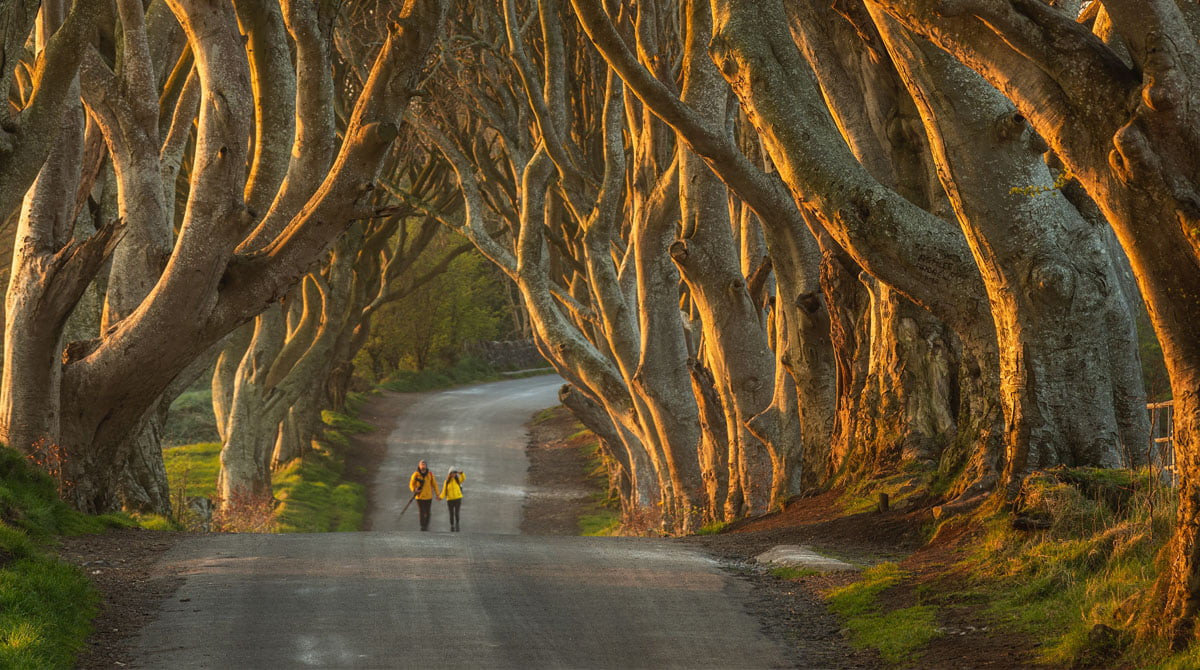When taking a picture, a photographer decides with which elements the picture should be designed. The aim is to make an image as harmonious and appealing as possible. The composition of an image determines whether a viewer is attracted to an image or not. In both landscape and wildlife photography, there are a few important basic rules in image composition. In this article you will find a selection of possibilities for image composition.
Rule of thirds
The picture is divided into thirds vertically and horizontally. It is thus divided into nine equal areas. Important image contents, such as the horizon or other striking motifs, are preferably positioned at one of the intersections.
The landscape shot was ideally designed using the third lines: The foreground is on the first horizontal line and the horizon on the second horizontal line. In addition, the main motif of the Three Peaks was deliberately placed on the left vertical third line. This gives the picture a harmonious effect.
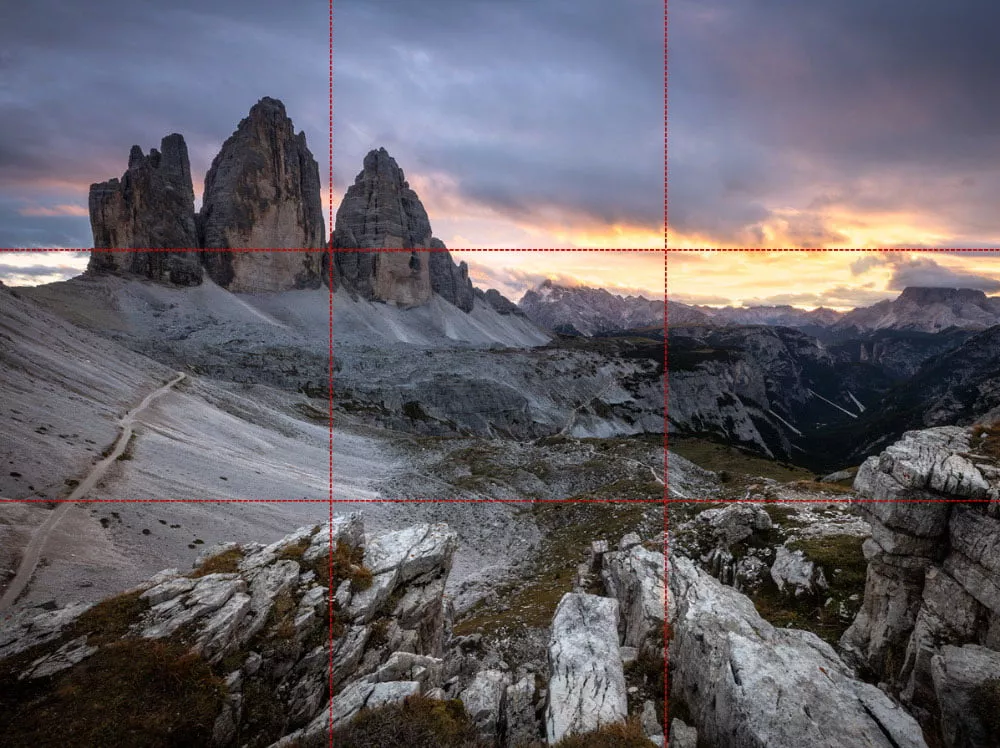
Fill the Frame
With this rule, you deliberately zoom in as close as possible so that the subject is placed in the picture in full format.
This close-up of a lion is captivating due to the format-filling positioning of the animal. Since disturbing elements in the surroundings are not visible, the king of animals appears even more imposing. The viewer’s eye can observe the motif in detail.
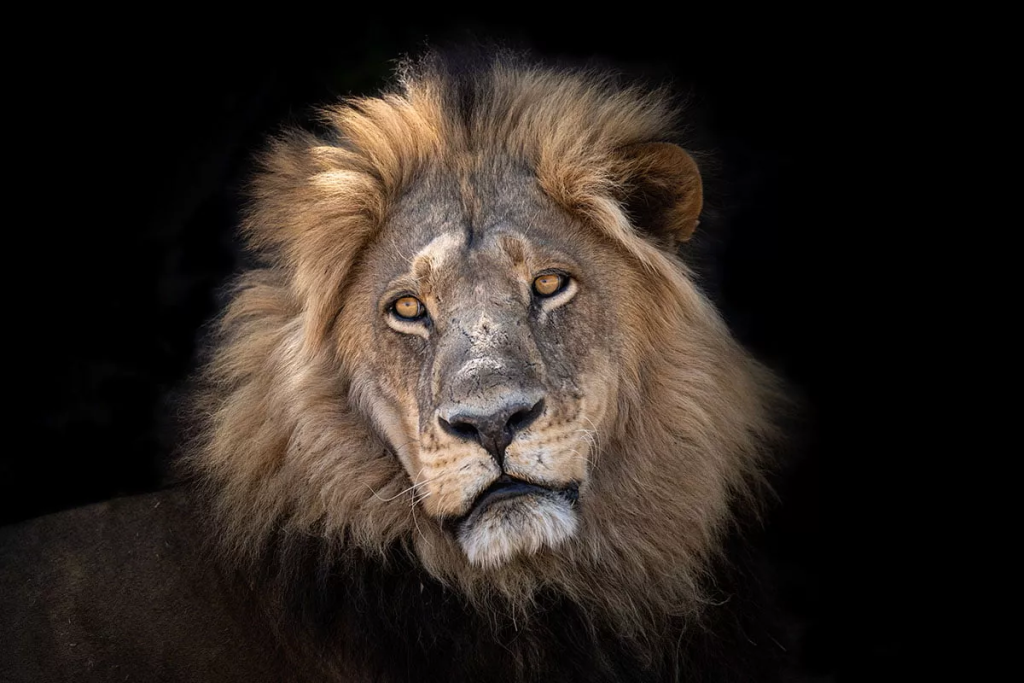
Symmetry
Symmetry often creates a fascinating effect. The horizon can often be positioned in the middle without disturbing. Symmetry gives a picture calmness and balance. Especially in landscape photography, reflections on water surfaces often offer a great motif.
This photo was taken on the Lofoten Islands. The reflection of the mountain range in the small lake gives the picture a unique calm and balance.
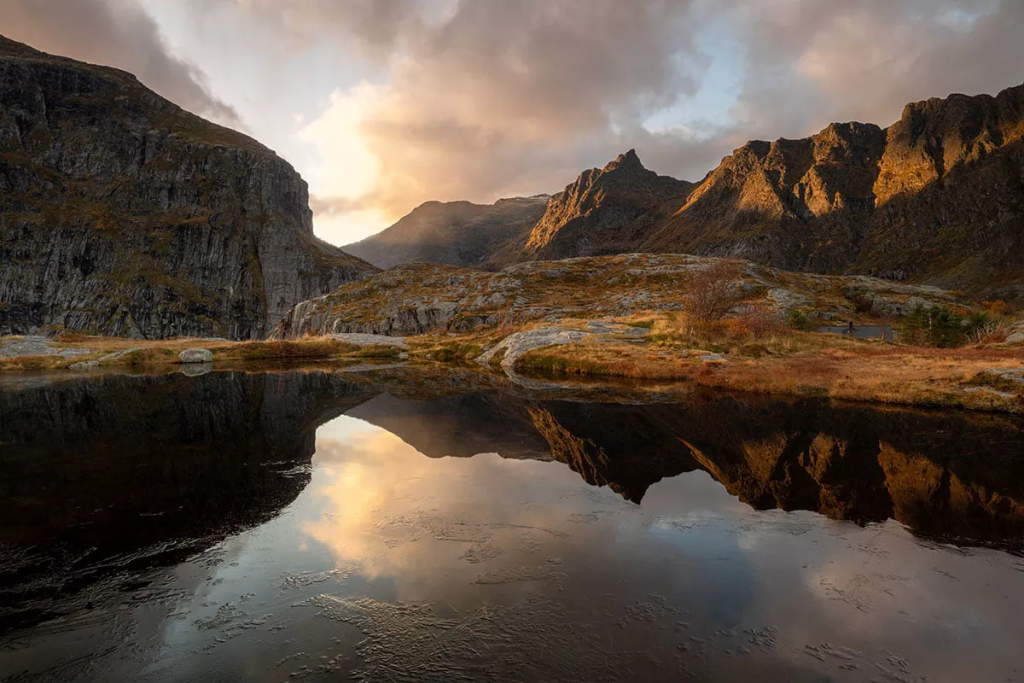
Natural Framing
The motif is surrounded by a natural frame that is already present in the scene. This gives the picture more depth and draws the eye directly to the main motif. In addition, it appears self-contained. Distracting elements in the foreground are not visible through the frame. Elements such as animals, trees, bushes, branches, caves, ice, archways are suitable.
These two photographs show the use of framing in wildlife photography. Both the natural frame of the two lions in the foreground and the wood in the background of the small leopard give the pictures more depth and the focus is on the two cubs.

Complementary colours
The colours opposite each other on the colour wheel are called complementary colours. For example, green is the complementary colour of red. If you combine these two colours, a great colour contrast is created and the picture looks appealing. Especially in nature you often find spectacular colour contrasts.
Sunsets can generate wonderful colour plays, as the example from Tuscany shows. The cloud cover was illuminated by the setting sun after a thunderstorm. Together with the green hill, this creates wonderful colour plays of red and green.
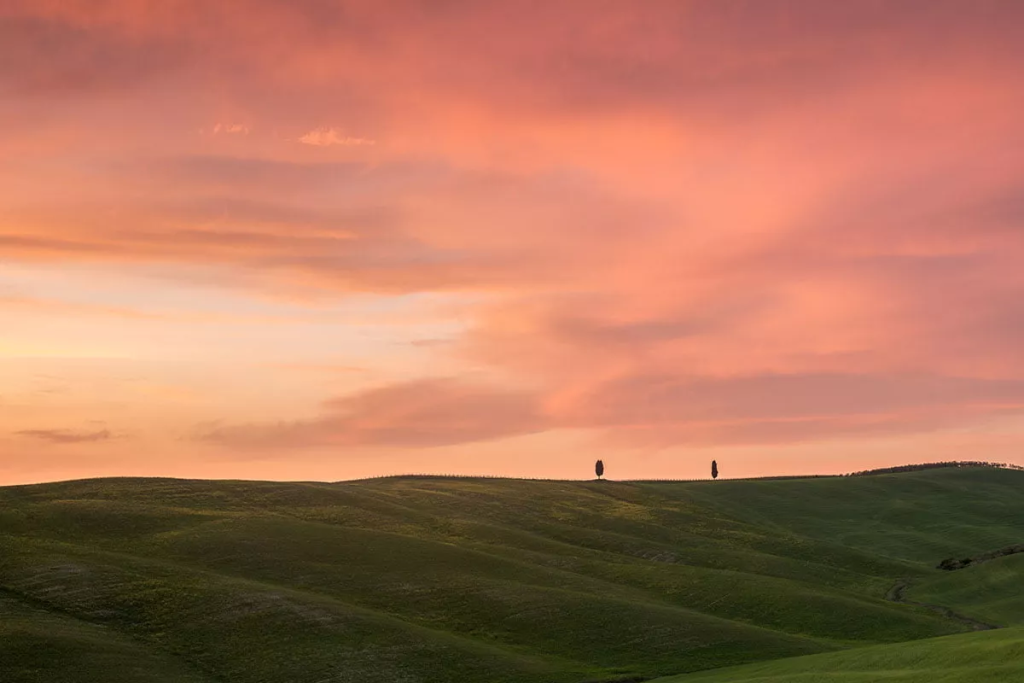
Layers
The use of different layers gives the picture more space and depth. If possible, the foreground, middle ground and background should always be taken into account when composing the picture.
In the picture taken from Slovenia, the layers are given more weight by the ground fog. The viewer is thus drawn directly into the picture and the eye is drawn to the small church on the hilltop.
The shot from the far north also uses the same principle. Here the rocks were deliberately placed in the foreground. In addition, care was taken to catch the wave at the moment when it flowed over the rocks. This increases the contrast on the black rocks and intensifies the effect of the plain.
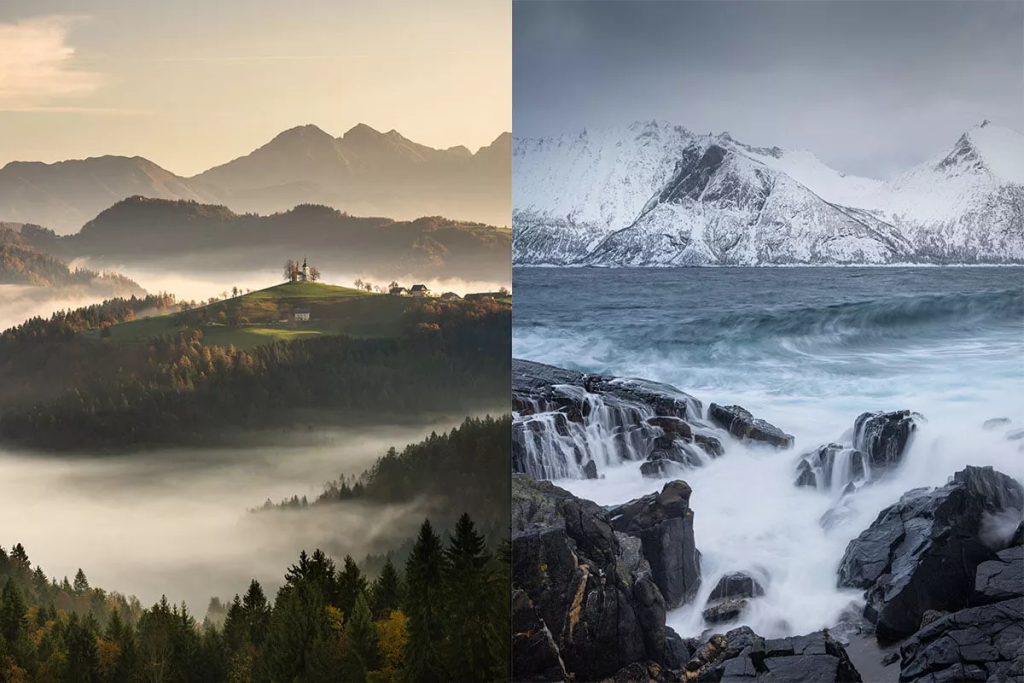
Leading lines
Leading lines are ideal for guiding the viewer’s gaze in the image and drawing their attention to the main subject in the shot. Leading lines can be perfectly integrated in the composition of a landscape shot. There are many such natural lines in nature: Rivers, paths, rock formations, walls, fences and many more.
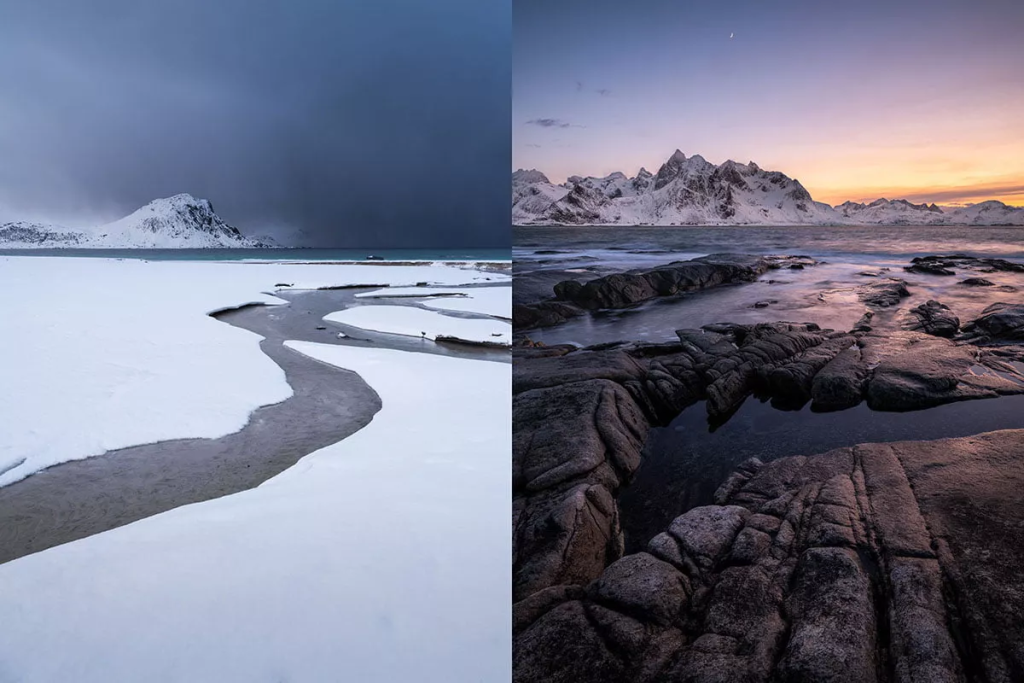
Negative space
The opposite of «Fill the Frame» is negative space in the composition. This is done by using a lot of «empty» space around the main subject. The result is a calm and simple image. The viewer can concentrate fully on the main motif and is not distracted by unnecessary details.
In the case of the castle from Scotland, a lot of negative space was deliberately included in the picture. As a result, the picture conveys a great deal of tranquillity. You can linger and really feel the quiet atmosphere during the sunset.
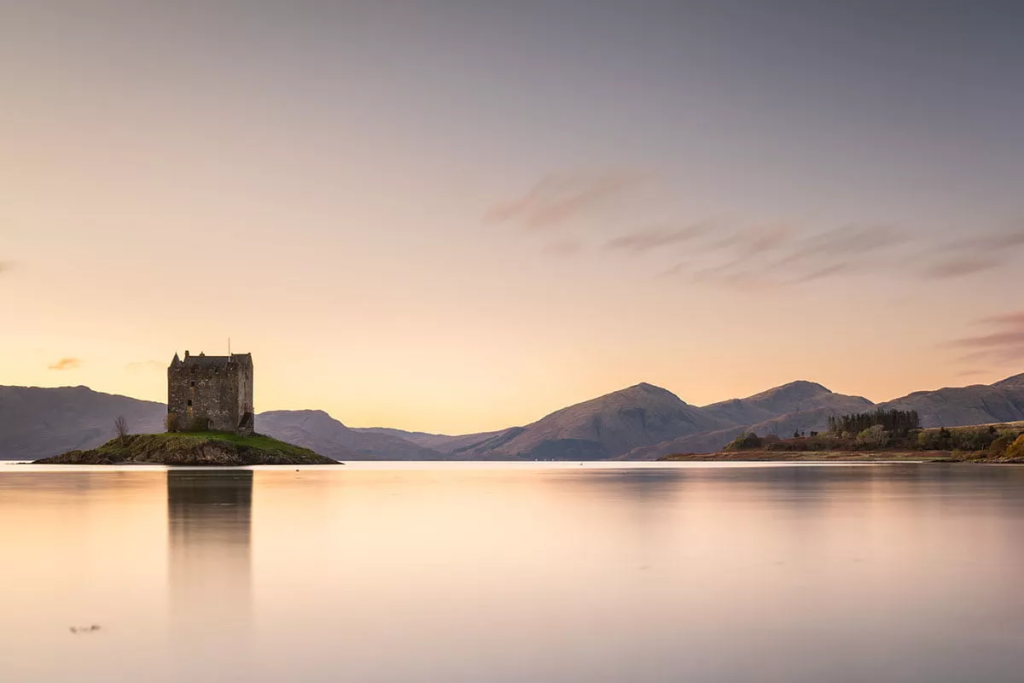
Depth of field
Depth of field can also be used to selectively shape an image. For example, the main subject or important elements in the picture can be brought into focus by using an open aperture. The subject is thus separated or isolated from the foreground or background. This method is suitable for both landscape and wildlife photography.
In this shot, the flowers in the foreground were blurred by an open aperture. Thus the focus is on the main subject with the castle and the typical landscape of the Hebrides in the background.
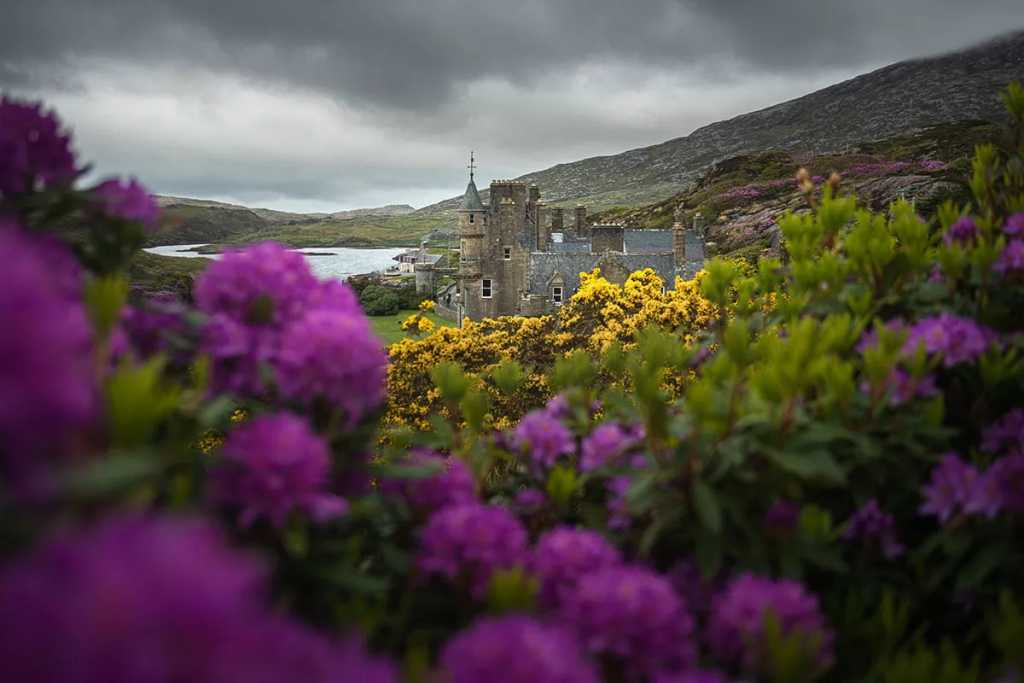
Avoid disturbing elements
Distracting or unnecessary elements in the picture should be avoided. It is important that the background and the edges of the shot are as simple as possible and do not unnecessarily distract from the main subject.
These can be, for example, cut trees and plants, stones, power lines, etc. In this example, you can see unsightly elements in the corners on the left, such as a small part of a garish shrub or bright spots in the stone. These immediately draw the eye away from the main subject. Here it helps to zoom in a little more and let these elements disappear from the picture. On the right, the example with the slightly adjusted image detail.
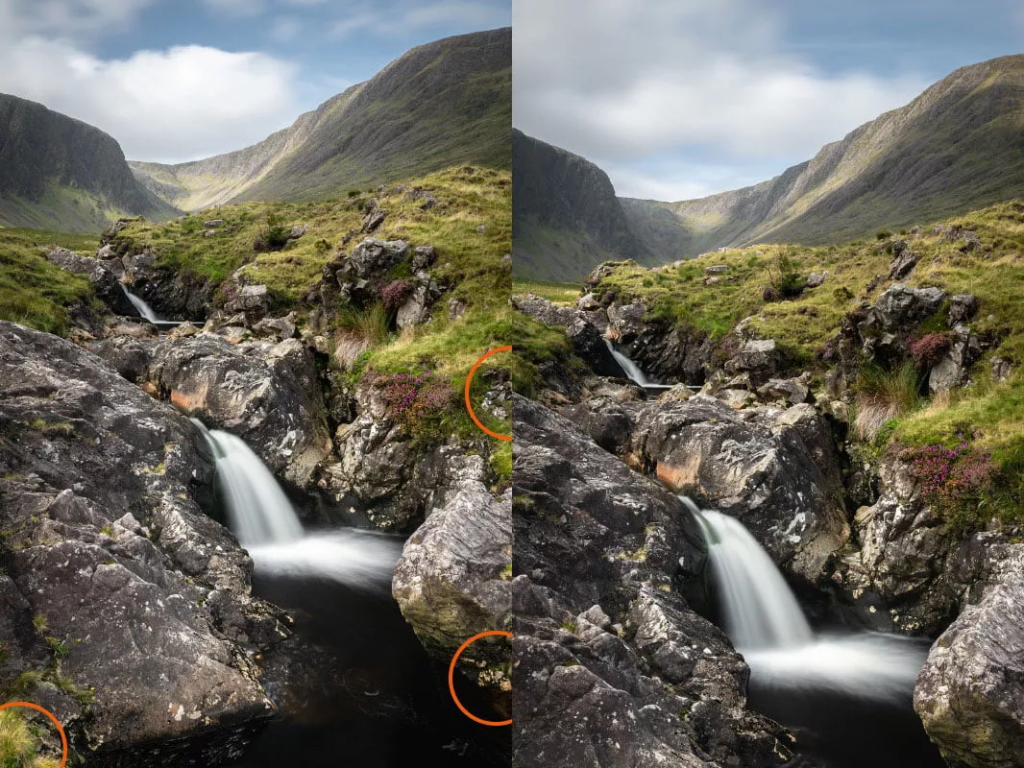
The rules listed here are not exhaustive, nor are they always compulsory to apply. The point is rather to learn which design elements to pay attention to and how to apply them for a captivating image effect.
This blog was provided to and by Amazingviews. Thank you very much!
www.amazingviews.ch

